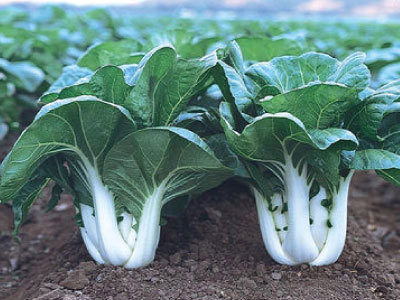 June-15-2023
June-15-2023
View: 3

Timing is crucial when harvesting baby bok choy to ensure maximum flavor and tenderness. Harvesting should be done before the onset of hot weather, as high temperatures can cause the plants to bolt or go to seed prematurely.
Planting baby bok choy at a farm offers an excellent opportunity to enjoy the benefits of this versatile and nutritious vegetable. With its relatively short maturity period, the ability to tolerate partial sun, and its preference for fertile soil, baby bok choy is an ideal crop for farmers in Mexico. This will provide a comprehensive guide to successfully planting and harvesting baby bok choy, highlighting key considerations such as planting techniques, optimal growing conditions, and harvesting tips.
Planting Techniques: To cultivate baby bok choy, farmers can choose between direct sowing or starting the seeds indoors for later transplantation. Direct sowing involves planting the seeds directly into the garden bed, while starting indoors allows for controlled germination and growth before moving the seedlings outside.
For direct sowing, prepare the soil by adding compost and organic matter to ensure fertility and a good nitrogen supply. After the soil is adequately prepared, sow the baby bok choy seeds at a depth of approximately 1/4 inch. It is recommended to space the seeds about 6 to 10 inches apart to allow sufficient room for growth. If multiple rows are being planted, maintain a distance of 18 to 30 inches between the rows to prevent competition and facilitate easy weeding.
Optimal Growing Conditions: Baby bok choy thrives in fertile, nitrogen-rich soil, making it essential to incorporate plenty of compost and organic matter during soil preparation. Additionally, the plants prefer slightly moist soil with consistent moisture levels, so regular watering is necessary to maintain optimal conditions. While bok choy can tolerate partial sun, it is advisable to provide it with a location that receives sufficient sunlight to promote healthy growth.
Harvesting Tips: Timing is crucial when harvesting baby bok choy to ensure maximum flavor and tenderness. Harvesting should be done before the onset of hot weather, as high temperatures can cause the plants to bolt or go to seed prematurely. The plants should reach a height of approximately 6 inches before they are ready for harvesting. At this stage, the entire head can be cut off just above soil level for dwarf varieties, while for full-sized varieties, outer leaves can be removed, allowing the remaining plant to continue growing to maturity.
Benefits of Baby Bok Choy: Baby bok choy offers numerous benefits, making it an attractive choice for cultivation in Mexican farms. In addition to its relatively short maturity period of 45 days, which allows for a quicker harvest, baby bok choy is packed with essential nutrients and vitamins. Its sweeter and more delicate flavor compared to standard bok choy makes it a versatile ingredient that can be eaten raw in salads or lightly cooked in various dishes.
Planting baby bok choy at a farm can be a rewarding experience, providing farmers with a quick-growing, nutrient-rich vegetable that adds value to their kitchen and markets. By following the recommended planting techniques, optimizing growing conditions, and adopting proper harvesting practices, farmers can ensure a successful bok choy harvest. With its adaptability to partial sun, preference for fertile soil, and ability to be eaten raw or lightly cooked, baby bok choy offers a fantastic opportunity for farmers in Mexico to diversify their crops and bring fresh, healthy produce to their tables and customers.
#BokChoy #ShortBookChoy #BabyBokChoy